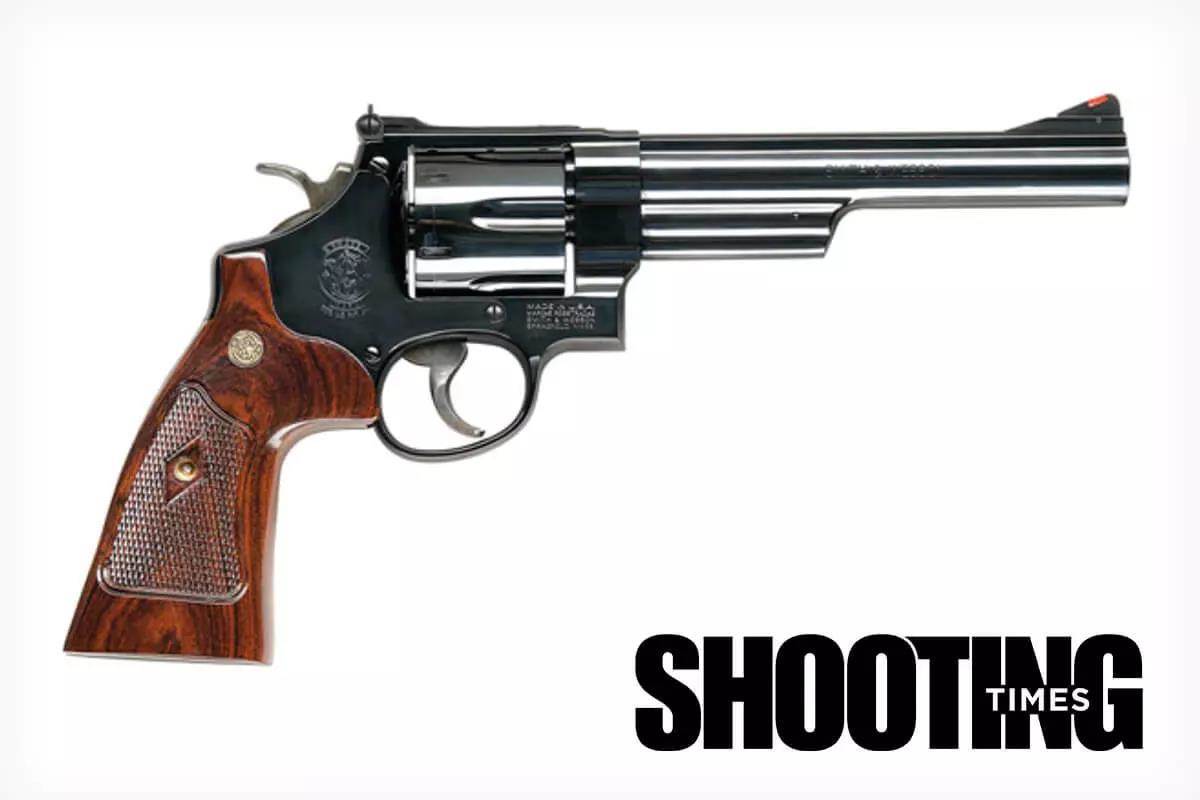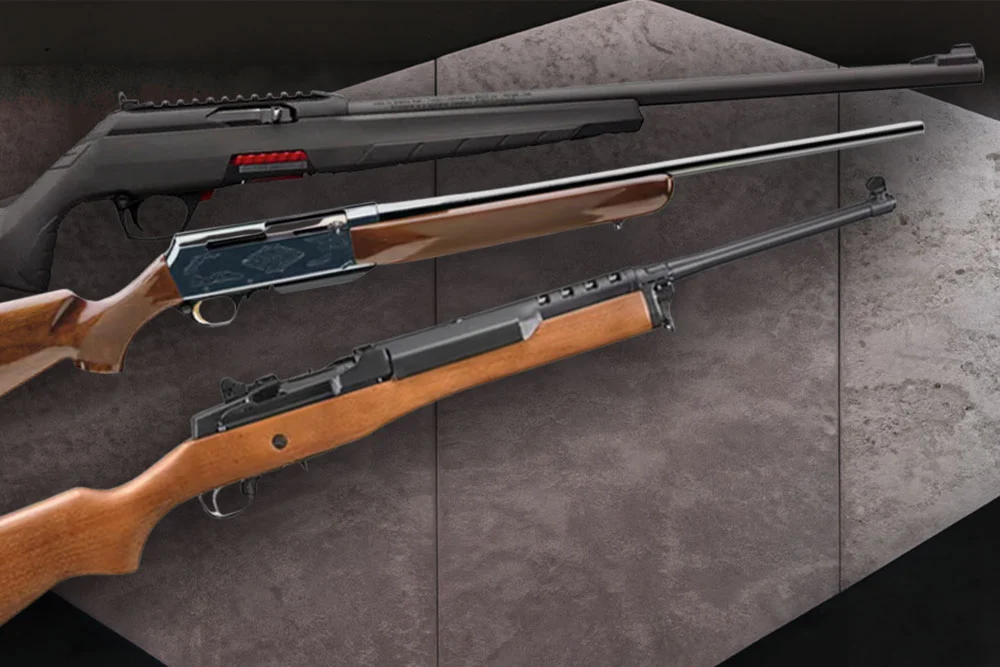Revolvers are one of the oldest and most iconic types of handguns, known for their simple design, reliability, and unique rotating cylinder mechanism. Despite the rise of semi-automatic pistols in modern times, revolvers remain highly popular for a variety of uses, including personal defense, sport shooting, and as collector’s items. Their ruggedness and ease of use have kept them relevant even in a world dominated by more advanced firearms.
This article explores the history, types, uses, and unique features of revolvers, shedding light on why they remain an enduring choice for many gun enthusiasts and everyday users alike.
1. What is a Revolver?
A revolver is a type of handgun that features a rotating cylinder capable of holding multiple rounds of ammunition. When the trigger is pulled, the cylinder rotates to align the next round with the barrel, allowing the user to fire successive shots without needing to reload after each shot. This design differentiates revolvers from other handguns, such as semi-automatic pistols, which rely on magazines to feed rounds into the chamber.
The key components of a revolver include:
- Cylinder: Holds multiple rounds of ammunition, typically between 5 and 7, though some revolvers may carry more or fewer.
- Barrel: The tube through which the bullet is expelled when the gun is fired.
- Hammer: A critical part of the firing mechanism, it strikes the cartridge’s primer to ignite the powder and discharge the bullet.
- Trigger: Activates the firing mechanism, either in double-action or single-action mode, depending on the revolver’s design.
Revolvers are most commonly chambered in calibers such as .38 Special, .357 Magnum, .44 Magnum, and .22 LR, though many other calibers are also available.
2. History of the Revolver
The history of revolvers is rich and intertwined with the development of firearms in general. Revolvers have been in use for centuries, and their evolution has been driven by the need for a more reliable, efficient, and powerful firearm.
- Early Developments: Early handguns were single-shot firearms, often referred to as “wheel locks” or “flintlocks,” which were cumbersome and slow to reload. The concept of a rotating cylinder was first explored in the early 19th century.
- Samuel Colt and the Colt Paterson: In 1836, Samuel Colt patented the first commercially successful revolver—the Colt Paterson. This revolver had a five-shot rotating cylinder and was a revolutionary advancement, allowing shooters to fire multiple shots without reloading after every shot. The Colt Paterson became highly influential and led to the mass production of revolvers for both military and civilian use.
- The Role of Revolvers in the American West: Revolvers became famous during the 19th century, particularly in the American West. They were often used by law enforcement, military personnel, and outlaws alike. The Colt Single Action Army (SAA), introduced in 1873, is one of the most iconic and widely recognized revolvers in history. It was famously used by lawmen such as Wyatt Earp and Billy the Kid.
- Modern Revolvers: Today, revolvers continue to be manufactured and used by both civilian gun owners and law enforcement agencies. While semi-automatics dominate the market, revolvers remain a favorite for certain types of gun owners due to their simplicity, reliability, and appeal as classic firearms.
3. Types of Revolvers
Revolvers are divided into two main types: single-action and double-action revolvers. Both operate on the same basic principle of a rotating cylinder, but their mechanisms for firing differ.
3.1. Single-Action Revolvers
Single-action revolvers require the shooter to manually cock the hammer before each shot. When the hammer is cocked, the cylinder rotates to align the next round with the barrel. The trigger’s only job in this type of revolver is to release the hammer, firing the round.
- Advantages: Single-action revolvers typically have a lighter and smoother trigger pull compared to double-action models, making them ideal for precision shooting.
- Disadvantages: The need to manually cock the hammer before each shot makes single-action revolvers slower to operate in high-pressure situations, which can be a disadvantage for self-defense.
The Colt Single Action Army revolver, commonly known as the “Peacemaker,” is the most famous example of a single-action revolver, famously associated with the Old West.
3.2. Double-Action Revolvers
Double-action revolvers allow the shooter to fire the weapon by simply pulling the trigger, which performs two actions: cocking the hammer and rotating the cylinder to align the next round with the barrel. This type of revolver is faster to shoot since the user does not need to manually cock the hammer between shots.
- Advantages: Double-action revolvers are faster and easier to operate, especially in self-defense situations. A quick pull of the trigger can fire multiple rounds rapidly.
- Disadvantages: The trigger pull on double-action revolvers is generally heavier and longer than single-action models, which can affect accuracy.
Many modern revolvers, such as the Ruger GP100 and the Smith & Wesson Model 686, are double-action revolvers.
3.3. Combo Action Revolvers (Double-Action/Single-Action)
Some revolvers are designed to function both as single-action and double-action guns, allowing the shooter to choose between the two modes based on preference. In double-action mode, the trigger both cocks the hammer and fires the gun, while in single-action mode, the hammer must be manually cocked for a lighter, more precise trigger pull.
These combo action revolvers provide greater versatility and are a popular choice among those who appreciate the advantages of both action types.
4. Uses of Revolvers
Revolvers continue to be a favored choice for various applications, including self-defense, law enforcement, hunting, and sport shooting.
- Self-Defense: Revolvers are often considered an ideal choice for personal protection, particularly for individuals who may have less experience with firearms. Their simplicity makes them easy to operate, and their reliability ensures that they will function when needed. Revolvers also tend to be less prone to malfunction compared to semi-automatic pistols.
- Law Enforcement: While semi-automatic pistols are more commonly used by police today, revolvers were historically the standard sidearm for law enforcement officers. Their reliability, ease of use, and powerful calibers made them a dependable choice for police forces around the world.
- Hunting: Revolvers are used in hunting, particularly for small game and big game in certain regions. Revolvers chambered in powerful calibers like .357 Magnum or .44 Magnum are commonly used for hunting, and some specialized revolvers are designed specifically for this purpose.
- Sport Shooting: Revolvers are a popular choice for competitive shooting sports. Events like Cowboy Action Shooting, in which participants engage in simulated Old West-style gunfights, often use revolvers as the primary firearm. Additionally, revolvers are used in bullseye shooting competitions, where precision and accuracy are key.
5. Advantages and Disadvantages of Revolvers
Advantages:
- Simplicity: Revolvers are straightforward to operate, with fewer parts than semi-automatic pistols. This makes them easy to learn and use for both novice and experienced shooters.
- Reliability: Revolvers are less prone to malfunctions compared to semi-automatic pistols, especially with low-quality or improperly loaded ammunition. The mechanical action of the revolver ensures that each round is properly chambered and fired.
- Powerful Calibers: Revolvers are available in some of the most powerful handgun calibers, such as .357 Magnum and .44 Magnum, making them ideal for self-defense and hunting.
- Durability: Revolvers tend to last longer than semi-automatic pistols and can withstand heavy use over many years.
Disadvantages:
- Limited Capacity: Revolvers typically hold fewer rounds than semi-automatic pistols, with most models accommodating between 5-7 rounds. This limits their capacity for sustained fire compared to modern pistols, which can hold up to 17 or more rounds.
- Slower to Reload: Reloading a revolver is slower than a semi-automatic pistol. The shooter must manually eject the spent rounds and insert new ones into the cylinder, a process that takes more time compared to simply swapping out a magazine.
6. Conclusion
Revolvers have stood the test of time as reliable, simple, and powerful firearms. While they may not have the rapid-fire capabilities or ammunition capacity of modern semi-automatic pistols, they offer unmatched durability and ease of use. Whether used for personal defense, law enforcement, hunting, or recreational shooting, revolvers continue to hold a place of importance in the world of firearms.
From the iconic Colt Single Action Army to the powerful .44 Magnum, revolvers remain a favorite for many gun enthusiasts. Their timeless design and dependable performance ensure that they will continue to play a key role in the firearms landscape for years to come.



